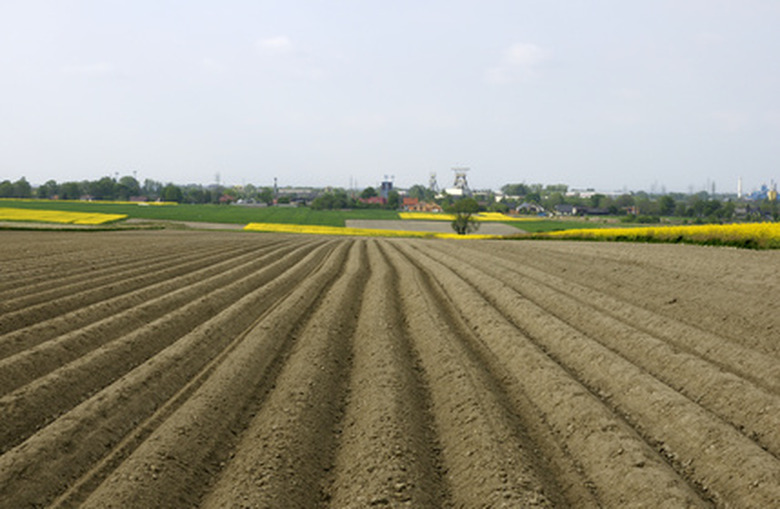Ancient Chinese Gardening Tools
In 1943, Joseph Needham watched a Chinese gardener graft plum scions onto rootstock. Needham noticed the Chinese gardener was grafting using different techniques than were known to Westerners. He theorized that this was because garden techniques in China were older than gardening techniques in the West. He went on to write 24 volumes of the history of Chinese civilization and technology. Along the way, he cataloged many of the gardening tools used in ancient China.
Wheelbarrow
Evidence of ancient wheelbarrows in China is depicted on murals dating to 118 A.D., during the time of the Han Dynasty. The first wheelbarrow was known as the "wooden ox." It consisted of a central wheel with a platform built around it. These wheelbarrows allowed the user to carry more weight than a European wheelbarrow, which resembled a stretcher. These wheel barrows were useful for farm work because fewer people were required to haul heavy loads. Because these carts were not balanced, the wheelbarrows were not useful for light-duty work.
- In 1943, Joseph Needham watched a Chinese gardener graft plum scions onto rootstock.
- These wheel barrows were useful for farm work because fewer people were required to haul heavy loads.
Plow
China was one of the earliest countries to experiment with casting iron. The Chinese invented the blast furnace by 476 B.C., and soon after began using plows made of cast iron. These early plows consisted of a cast-iron mouldboard that shifted the soil with very little drag. During the same period in Europe, plows utilized a wooden mouldboard. By 907 A.D., the Chinese were using steel in agricultural implements.
Seed Drill
During ancient times, Europeans and farmers from the Middle East sowed seed by flinging it into the ground. This method caused much seed to become lost. Farmers often had to save over half of their crops for seed using this method. By contrast, in China, around 200 B.C., farmers were using "seed drills." These drills consisted of plows that cut furrows into the soil for seed, a mechanism that released seed in even dribbles into the furrows, and a roller to close the furrow behind the seed. Seed drills made farms in China an estimated 30 times more efficient than their European counterparts.
- China was one of the earliest countries to experiment with casting iron.
- Seed drills made farms in China an estimated 30 times more efficient than their European counterparts.
